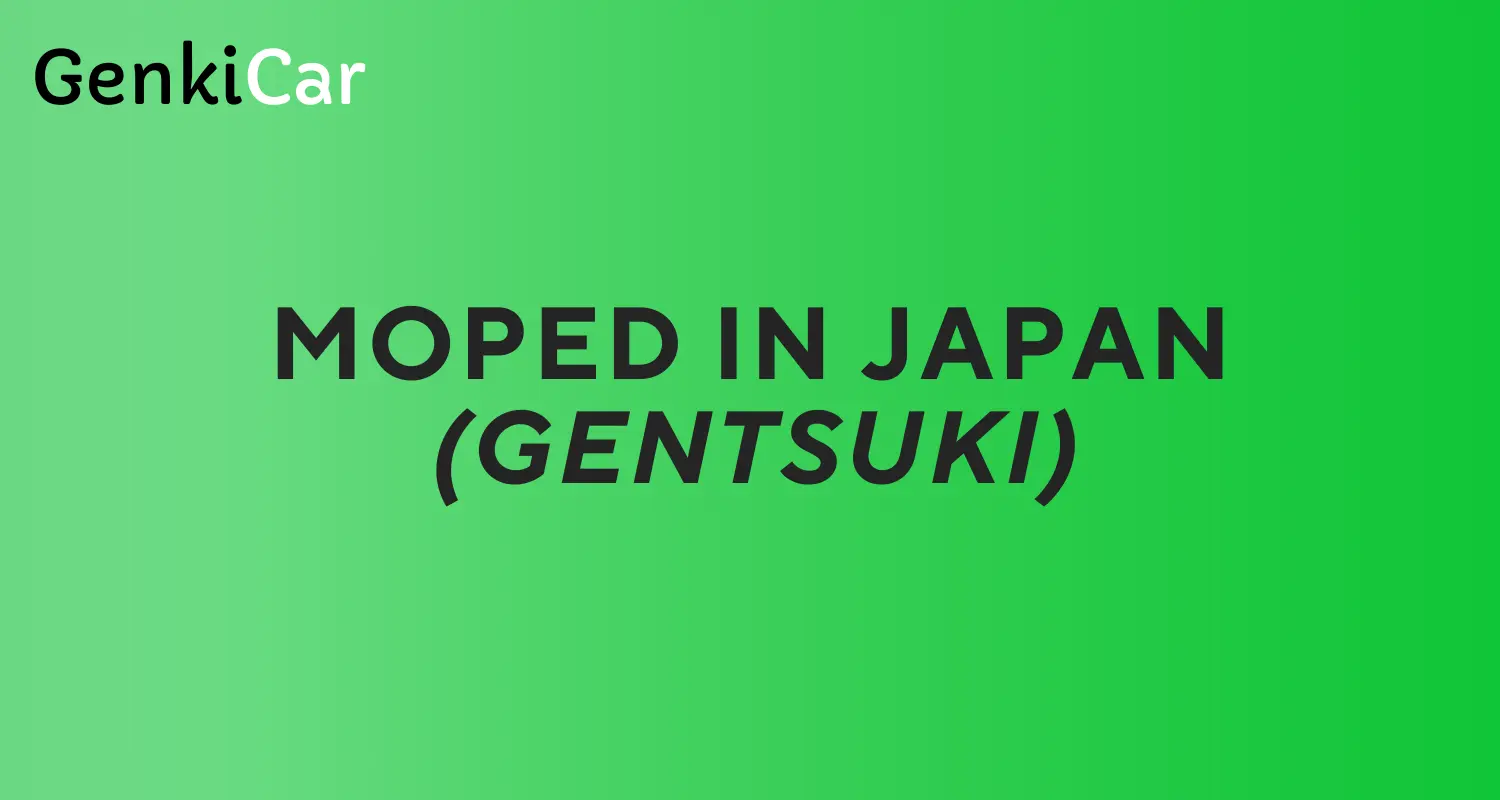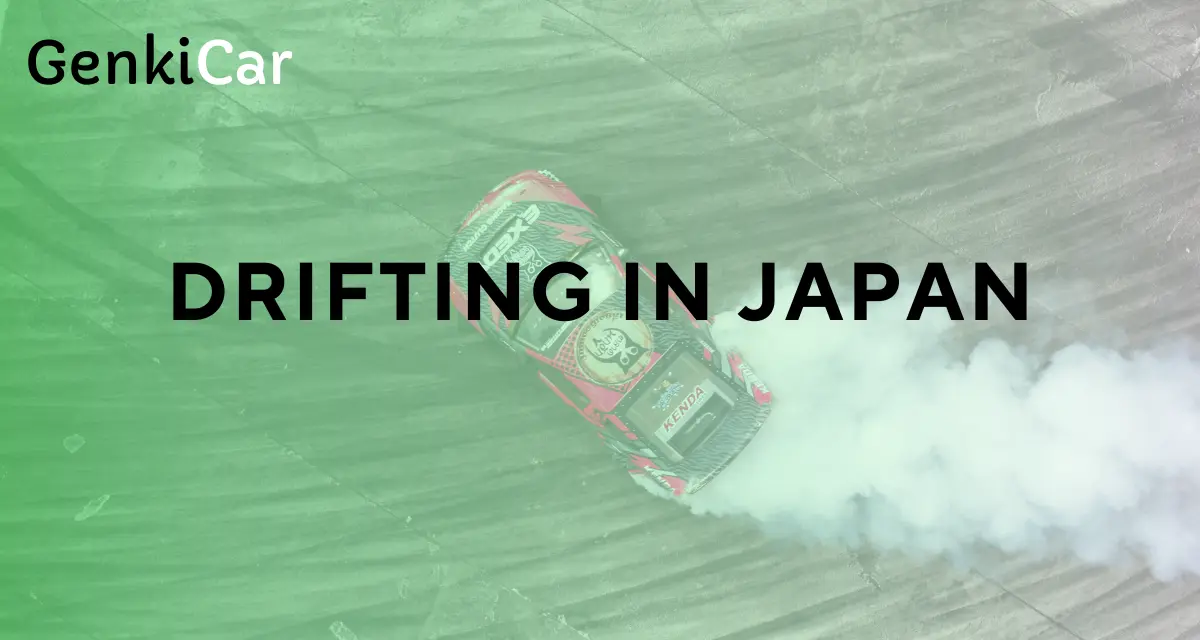Motorbikes in Japan have licenses which are classified into different categories based on engine displacement:
Types of Motorcycle Licenses in Japan
- Moped License (Gentsuki) (原動機付自転車免許) – This license is for riders who wish to operate mopeds or scooters with engines up to 50cc. The moped is the most basic type of motorbike in Japan, perfect for short city commutes or local travel.
- Small Motorcycle License (小型自動二輪免許) – If you want to ride a bike with an engine between 50cc and 125cc, you’ll need this license. These small motorcycles are ideal for those looking for more power than a moped while still maintaining ease of use.
- Ordinary Motorcycle License (普通自動二輪免許) – This license applies to bikes with an engine displacement ranging from 125cc to 400cc. It is one of the more common licenses and offers greater freedom, as it covers a wide range of motorcycles, including popular models for daily commuting and recreational riding.
- Large Motorcycle License (大型自動二輪免許) – For riders who wish to operate powerful motorcycles over 400cc, the large motorcycle license is required. This category covers high-performance bikes and larger touring motorcycles, often favored by enthusiasts and long-distance riders.
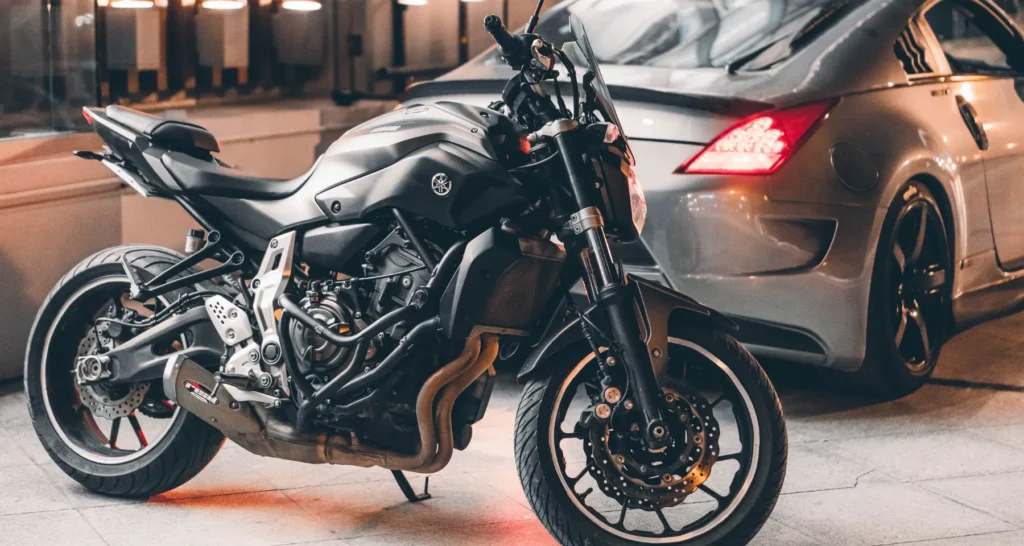
How to Obtain a Motorcycle in Japan?
Obtaining a motorcycle license in Japan is a structured process, and several requirements must be met before you can legally ride on the roads. The steps involve both written and practical tests designed to ensure riders are capable of operating motorbikes safely and responsibly.
Requirements and Age Limits
To obtain a motorcycle license in Japan, you must meet certain age and residency requirements. The minimum age for a moped or small motorcycle license is 16, while for the ordinary and large motorcycle licenses, you must be at least 18 years old. Additionally, you need to have a valid Japanese residence and be in good health to pass the required medical examinations.
Process: Written and Practical Tests
The licensing process includes two main components: a written exam and a practical riding test. The written exam covers road safety laws, traffic signs, and basic motorcycle knowledge. The practical exam assesses your ability to handle the motorcycle in different situations, including maneuvering in tight spaces and demonstrating safe riding techniques. Many riders choose to enroll in a driving school to help them prepare for these rigorous tests.
Cost of Attending a Riding School
While it’s possible to study for a motorcycle license on your own, most people opt for attending a professional riding school. This is especially true for those applying for an ordinary or large motorcycle licenses. The cost of attending a riding school in Japan varies, but on average, it can range from ¥50,000 to ¥100,000, depending on the school and the type of license you’re pursuing. The price generally includes both the classroom training and the practical riding lessons, making it a comprehensive way to get licensed.
For more info check our guide to Driving Schools in Japan.
What Are the Rules and Regulations for Riding a Motorbike in Japan?
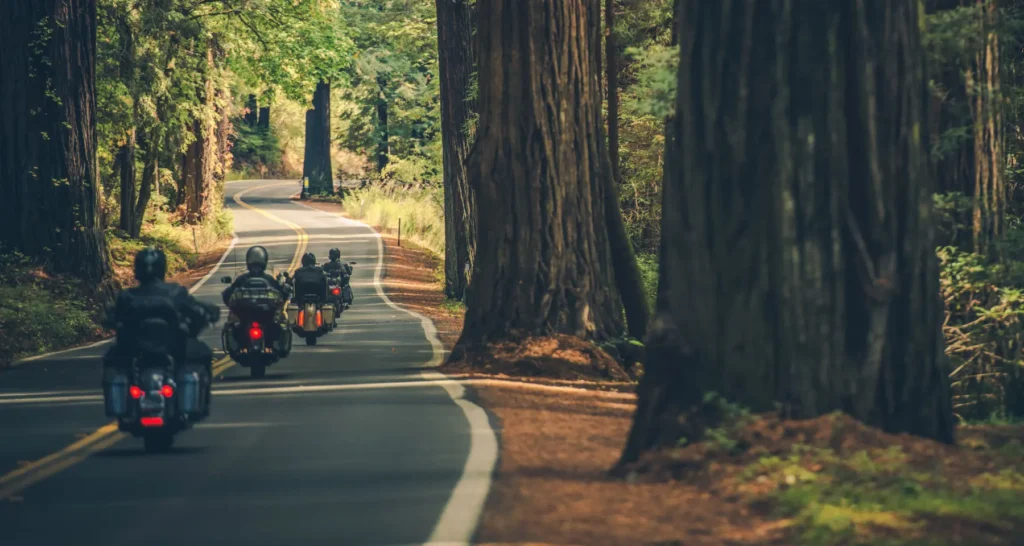
Traffic Laws and Safety Requirements
When riding a motorbike in Japan, it’s very important to be aware of the specific traffic laws and safety requirements that govern two-wheeled vehicles. These laws not only help ensure the safety of riders but also contribute to the overall flow of traffic in the country.
Mandatory Helmet Use
In Japan, wearing a helmet while riding a motorbike is mandatory for both the rider and any passengers. This law applies regardless of the type of motorcycle or the rider’s experience level. Helmets must meet Japanese safety standards, and failure to comply can result in fines. The importance of helmet use cannot be overstated, as it significantly reduces the risk of injury in the event of an accident.
Speed Limits on Urban Roads vs. Expressways
Speed limits for motorcycles in Japan vary depending on the type of road you’re on. On urban roads and residential streets, the speed limit is typically 40 km/h (25 mph), but it can be lower in certain areas, especially near schools or busy commercial districts. These limits are strictly enforced, and exceeding them can lead to penalties.
On expressways and major highways, the speed limit for motorbikes is generally 100 km/h (62 mph), but this can vary in certain regions. Riders should always pay attention to road signs that indicate the speed limits for motorcycles, as they may differ from those for cars. Notably, motorbikes on expressways must have an engine displacement of at least 125cc to legally enter.
Passenger Rules on Highways
When riding on highways or expressways, there are specific rules regarding passengers. Motorcycles with engine sizes under 125cc are NOT allowed to carry passengers on expressways. For motorcycles above 125cc, passengers are permitted, but both the rider and the passenger must wear helmets. Additionally, riders should ensure that their motorcycle is equipped with the necessary footrests and other safety features for carrying passengers.
New Regulations for Electric and Pedal-Equipped Motorbikes (2024 Update)
As of November 2024, Japan has introduced new regulations regarding electric and pedal-equipped motorbikes, particularly impacting those traditionally classified as bicycles. These changes aim to standardize the legal framework for such vehicles, ensuring safety and compliance with road traffic laws. Here’s what you need to know about the updates:
Changes in Classification
One of the key changes is the reclassification of pedal-equipped vehicles. Previously, bicycles with pedal assistance or small engines were often not classified as motorbikes. However, under the revised Road Traffic Act, these vehicles are now officially considered motorcycles, regardless of whether the pedals are used. This means that even electric bicycles with pedals must meet the same legal requirements as traditional motorbikes, including licensing and registration.
This update applies to electric bicycles and other pedal-assisted motorbikes that have a motor with an output greater than 250 watts. This change is particularly relevant to the growing popularity of electric bikes and the rising demand for eco-friendly transportation options.
Registration and License Requirements
Following this reclassification, all-electric and pedal-equipped motorbikes now require registration with the authorities and must display appropriate license plates. Riders are also obligated to obtain a motorcycle license, depending on the engine size, just like with traditional motorcycles.
For example, electric bikes that fall within the 50cc to 125cc range will require a small motorcycle license (小型自動二輪免許), while those exceeding 125cc will require an ordinary motorcycle license (普通自動二輪免許). The shift to mandatory licensing and registration aims to ensure that riders of these vehicles have the necessary knowledge of road safety and traffic regulations.
Increased Police Enforcement
With the introduction of these new regulations, police enforcement has become more stringent. Riders of electric and pedal-equipped motorbikes must ensure compliance with the updated laws to avoid fines or penalties. This includes carrying a valid license, having proper registration, and wearing a helmet while riding. The Japanese police are actively increasing their monitoring of such vehicles, particularly in urban areas where electric bikes are becoming increasingly popular. Riders who fail to comply with the regulations can face fines, vehicle impoundment, and even points on their driving record.
These changes are part of Japan’s ongoing efforts to improve road safety and better integrate newer, eco-friendly transportation options into the country’s well-established traffic systems. As the popularity of electric and pedal-equipped motorbikes continues to grow, these regulations ensure that both riders and other road users can safely coexist. We have also released our Car Accident in Japan report, make sure to check it out!
How to Rent a Motorbike in Japan?
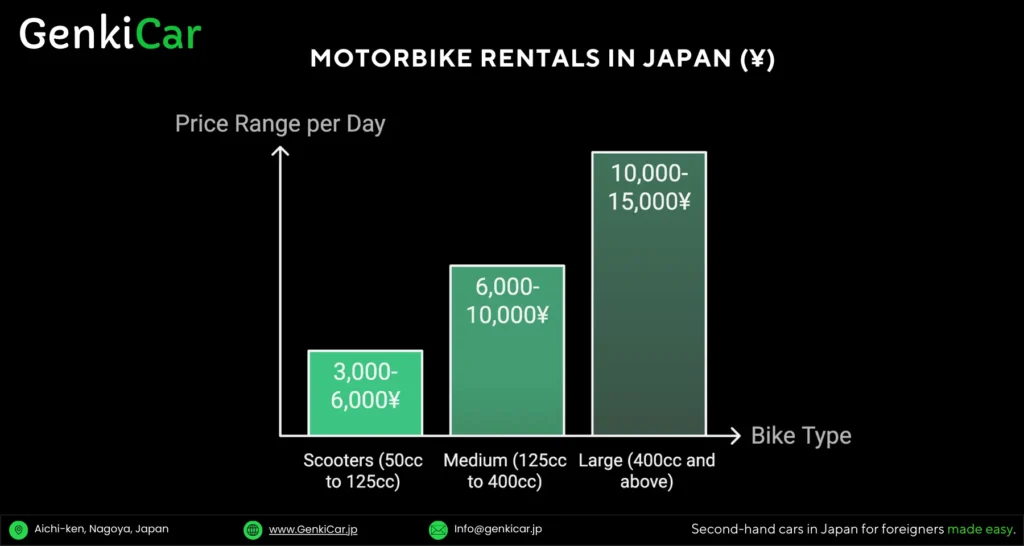
Renting a motorbike in Japan is a convenient and exciting way to explore the country, As a local resident or a tourist. there are various rental services to choose from. Below is an overview of the best-reviewed motorbike rental services and what to expect in terms of pricing and insurance requirements.
Best Motorbike Rental Services in Japan
- Rental819 – One of Japan’s largest motorbike rental chains, Rental819 offers an extensive range of motorcycles for different needs, from scooters to large touring bikes. With locations across major cities and tourist destinations, including Tokyo, Osaka, and Kyoto, Rental819 is an ideal choice for both short-term rentals and longer road trips. The service is well-known for its customer-friendly policies, and some locations provide multilingual support, making it easier for international riders to navigate the process.
- Japan Bike Rentals – If you’re visiting Japan and need a motorbike with English-language support, Japan Bike Rentals is a good option. They offer a wide variety of motorcycles, including sportbikes, cruisers, and classic bikes. This service is especially popular with tourists, as it ensures smooth communication with staff, and it has convenient pick-up locations near major transportation hubs. It’s perfect for those looking to tour Japan’s scenic roads with the added comfort of English-language assistance.
- Moto Tours Japan – For those seeking a more personalized experience, Moto Tours Japan offers guided and self-guided motorcycle tours. Whether you’re a seasoned rider or a beginner, these tours allow you to explore Japan’s natural beauty while having the support of experienced guides. Moto Tours Japan can also provide customized routes based on your preferences, making it an attractive choice for anyone looking to combine sightseeing with motorbike riding in a safe and organized way.
Cost of Renting a Motorbike in Japan
The cost of renting a motorbike in Japan varies depending on several factors, including the type of bike you choose and the rental duration. Here’s a general breakdown of the price ranges:
- Price Range Based on Bike Type and Duration
- Scooters (50cc to 125cc): Prices for smaller scooters typically start at around ¥3,000 to ¥6,000 per day. These are perfect for short city rides or day trips.
- Medium Motorcycles (125cc to 400cc): Expect to pay around ¥6,000 to ¥10,000 per day for these bikes. Ideal for those looking for a bit more power and comfort, these bikes are suited for longer rides and tours.
- Large Motorcycles (400cc and above): Rentals for high-performance or touring bikes can range from ¥10,000 to ¥15,000 per day, depending on the model and duration. For longer rentals, prices may be discounted, so it’s worth considering multi-day options if you’re planning an extended trip.
- Insurance Requirements and Additional Costs
Most motorbike rental services in Japan will require you to take out insurance to cover any potential damage or accidents. Basic insurance is often included in the rental price, but you may be offered additional coverage for theft or damage at a higher rate. The cost of additional insurance typically ranges from ¥1,000 to ¥3,000 per day, depending on the rental company.
Additionally, some services may charge extra fees for items like helmets (if not included), GPS navigation, or additional gear. It’s important to check the terms of each rental service for any hidden costs that may apply.
What Are the Best Motorbike in Japan Touring Routes?
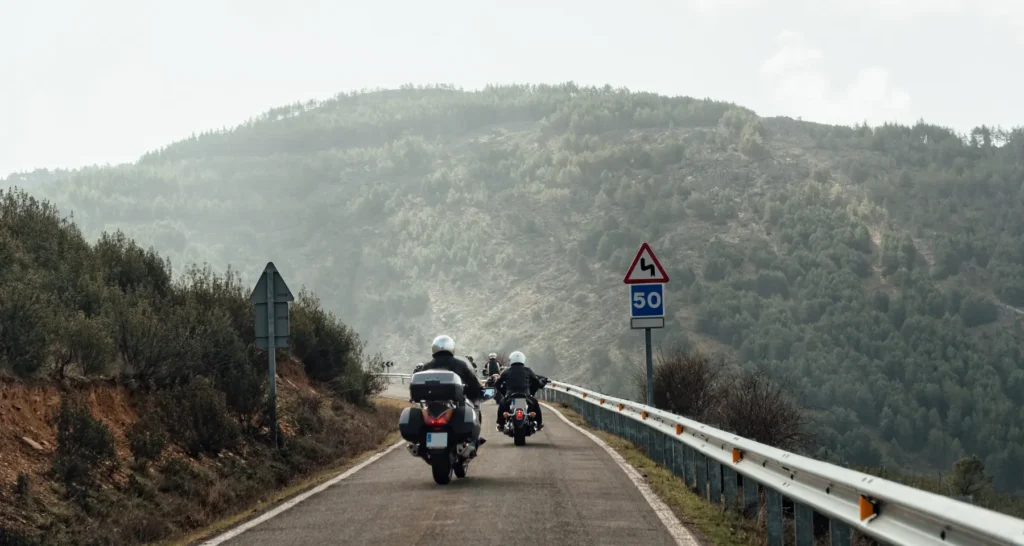
Japan offers a wide range of stunning routes for motorbike enthusiasts, the country’s diverse landscapes make it a perfect destination for motorbike touring. Here are some of the best routes for riders looking to explore Japan’s beauty on two wheels.
Top Scenic Roads for Motorbike Riders
- Hokkaido – Open Roads and Nature
Hokkaido, the northernmost island of Japan, is a motorcyclist’s dream. Known for its expansive, open roads and stunning natural beauty, it offers a serene escape from the busier parts of Japan. Riders can enjoy vast fields, rolling hills, and majestic mountains, making it a fantastic destination for those who love both solitude and adventure. Popular routes include the scenic drive along the Daisetsuzan National Park, where riders can immerse themselves in Hokkaido’s wild beauty, especially during the summer months when the flora is in full bloom. In winter, snow-covered landscapes make for a magical, albeit more challenging, ride. - Izu Peninsula – Coastal Views and Curves
Located just south of Tokyo, the Izu Peninsula offers some of Japan’s most picturesque coastal roads. Riders can enjoy twisting, curving roads with breathtaking views of the Pacific Ocean on one side and lush green mountains on the other. The route along the peninsula’s coastline is perfect for motorbike touring, especially during spring and autumn when the weather is mild, and the scenery is vibrant. The Izu Skyline, which runs through the mountains, offers panoramic views of the ocean and makes for an exhilarating ride with plenty of challenging curves. - Shikoku – Seto Bridge and Historic Landscapes
Shikoku, Japan’s smallest main island, is known for its beautiful coastal roads and historic sites. A must-see is the Seto Inland Sea, where the iconic Seto Ohashi Bridge connects Shikoku with Honshu. This bridge offers a spectacular view for riders, and crossing it is a highlight of any tour. Additionally, the island is home to the 88-temple pilgrimage, where riders can explore ancient temples and lush forests, creating a perfect blend of history and natural beauty. Shikoku’s less crowded roads also provide a peaceful and enjoyable riding experience.
Motorcycle Tourism and Cultural Events
- Japan Moto Tourism Organization (JMTO)
For riders looking to combine their passion for motorbikes with cultural experiences, JMTO offers resources and guidance for touring the country on two wheels. The JMTO works with various rental companies, local businesses, and motorbike tour providers to create a seamless experience for both domestic and international riders. They also promote safe riding and support tourism in rural areas by encouraging motorbike enthusiasts to explore lesser-known routes across Japan. - Popular Annual Motorbike Events and Meetups
Japan hosts several motorbike events throughout the year that attract riders from around the world. These events range from competitive races to community meetups and custom bike shows. Notable events include the MOTO GP race held at the Motegi Circuit and the Tokyo Motorcycle Show, which features the latest motorcycle technology and custom designs. For those looking to experience Japanese motorcycle culture up close, attending these events is an excellent way to connect with fellow enthusiasts. - Super Cub Meeting and Other Community Gatherings
One of Japan’s most iconic motorbikes, the Honda Super Cub, has a dedicated following, and there are annual events where fans of the bike gather to celebrate its legacy. The Super Cub Meeting, held in various regions, brings together thousands of riders who share a love for this reliable and simple motorcycle. There are also smaller, regional meetups for fans of vintage bikes, touring motorcycles, and other specific models. These gatherings are an excellent opportunity to meet local riders, exchange tips, and enjoy the camaraderie that comes with being part of Japan’s motorbike community.
Japan’s motorbike touring routes are perfect for riders who want to immerse themselves in the country’s landscapes and culture. Whether you’re exploring the mountains of Hokkaido or enjoying the coastal views of Shikoku, there’s no shortage of stunning roads and memorable experiences waiting for motorbike enthusiasts.


